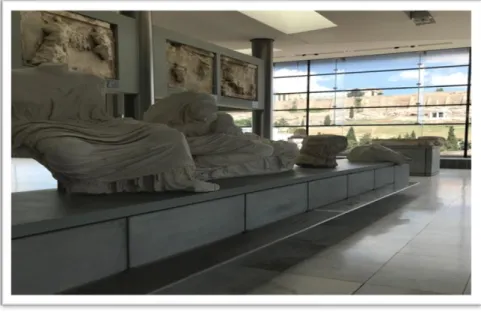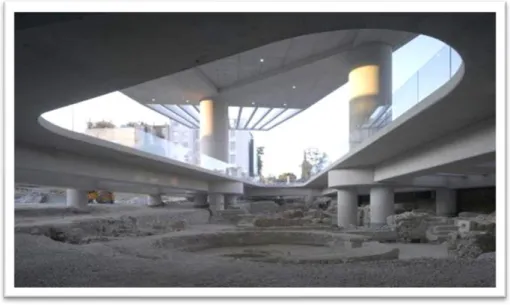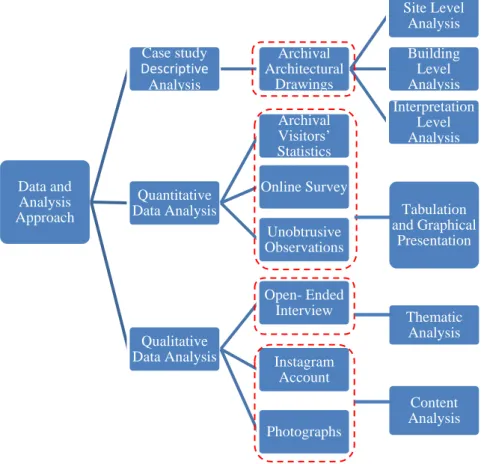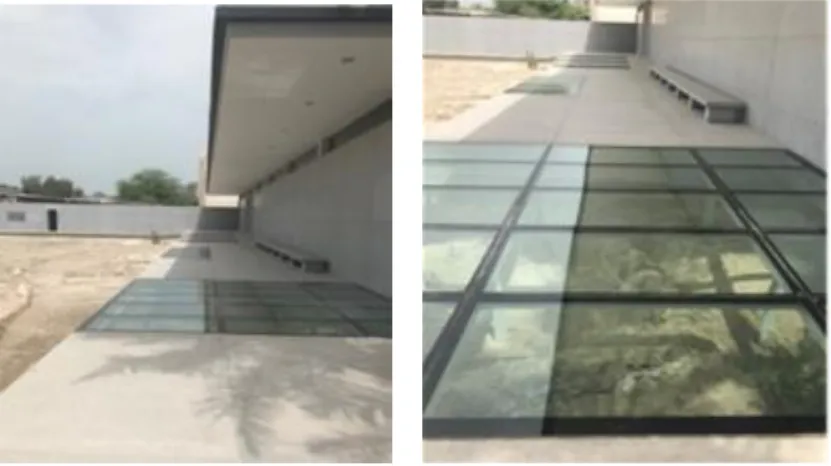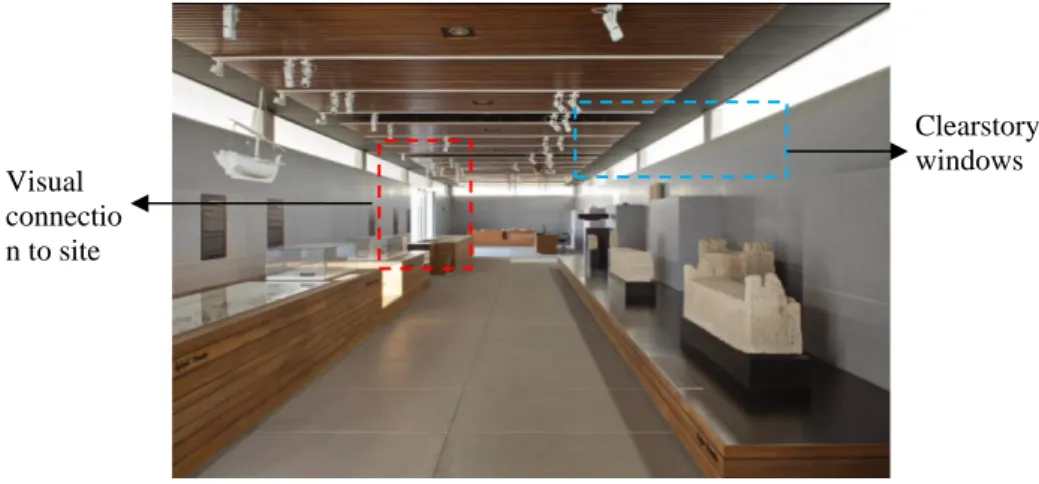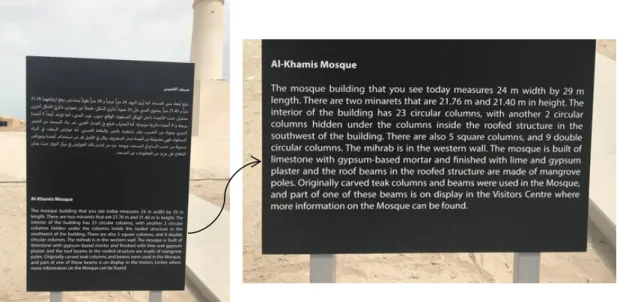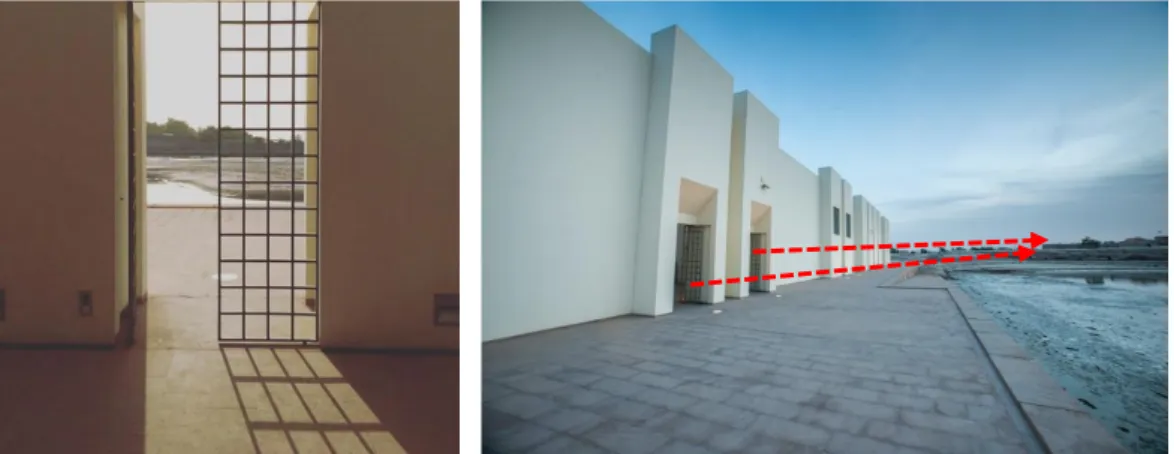Introduction
- Preamble
- Background; Site-Related Museums Discourse
- Problem Statement
- Site-Related Museums in Bahrain
- Aims and Objectives
- Importance of the Study
- Organization of the Study
This study evaluates the ability of museums associated with historic sites to convey meanings of historic sites to visitors and examines the perceptive and emotional experience of stakeholders of the same environment. Therefore, the Historic Sites Interpretation Centers came into being that better represent the relationship between the site-related museum and the historic site.
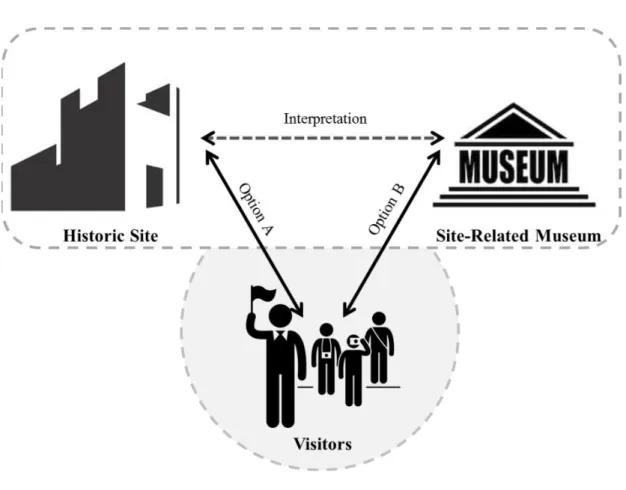
Literature Review
Overview
The third section explores the relationships between visitor experience and the meaning-making process in historic sites and site-related museums, given that the model of visitor experience consists of personal, social and physical contexts (Packer and Ballantyne, 2016). It is considered a critical component of the meaning-making process and is based on the collective memory, knowledge and social interaction of visitors with others (Ansbacher, 2013; Antón et al., 2018; Falk, 2016).
Museum: as an Interpretive System
- Historical Background
- Critical Review of Museums Types and Classification
- New Classification: Loose Fit, Tight Fit and Historic Site
Based on the relationship of the museums to the context and the method of interpretation used, known as "in situ" or "in context", a new classification is proposed, which includes three different typologies. The next section reviews the studies on the "Center for the Interpretation of Historic Sites" as an independent museum typology, focusing on its purpose and dual mode of interpretation, labeled as "in situ" and "in context".
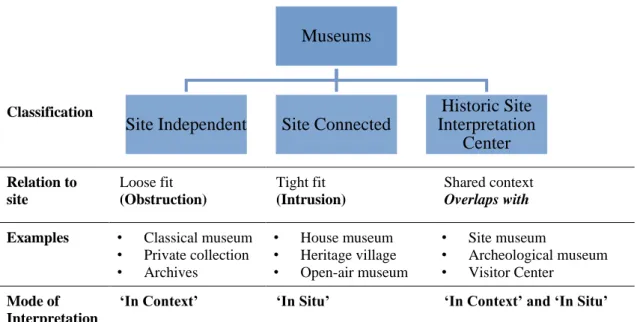
Interpretation: Historic Site Interpretation Center Core
- Interpretation: Concept of Meaning-Making
- The Theories of Interpretation
- Interpretation: Part of Musealization Process
- Interpretation of “Objects of Ethnography”
- Interpretation between “In Context” and “In Situ”
The act of interpretation takes place 'in situ' or 'in context' in relation to the second phase of the museological process (recreate) (Rein, 2011). To this end, the concepts of interpretation “in situ” and “in context” have a unique set of communication approaches.
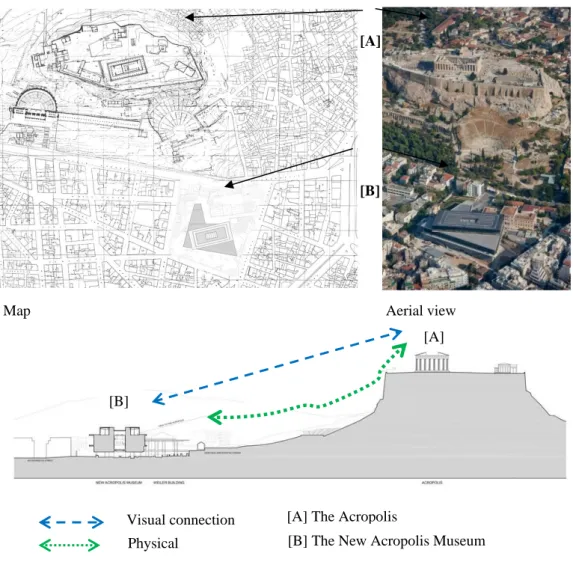
Conceptualizing the Visitors’ Experience
- Elements that Characterize the Visitors’ Experience
- The Drivers of the Visitors’ Experiences
- Visitor Interests, Expectations and Concerns
- Visitor’s Experience at Historic Sites and Museums
However, the visitors' behavior and experiences are often influenced by social interaction (Brida et al., 2016; Dumbraveanu et al., 2016; Steier et al., 2015). In addition, environmental and physical conditions in spaces stimulate visitors to feel in a given place (de Rojas and Camarero, 2008; Kempiak et al., 2017). On the cognitive level, visitors seek a diversified and intellectual experience in museums and cultural platforms (Kempiak et al., 2017; Rémi et al., 2010; Sheng and Chen, 2012).
Visitors' expectations and interests in learning and exploring cultural evidence at historic sites and museums, as well as historic site interpretive centers lead to expressive and meaningful experiences (Kempiak et al., 2017). Likewise, the visitor's self-context provides an opportunity to influence the overall experience (Falk et al., 2012; Packer and Ballantyne, 2016).
Museums and Visitors Studies: Status of Knowledge, Gaps
- The Museum Studies
- The Visitors’ Studies
Such values are attempted to enable visitors to gain new knowledge or expand their current understanding (Kempiak et al., 2017). In addition, many scholars have argued that curators paid great attention to the museum collections over the visitors' experience (Falk et al., 2012; Kempiak et al., 2017; MEI and BeMA, 2019). As an alternative to this dilemma, museums, including historical site interpretation centers, tend to organize small and large-scale activities to attract visitors (Lanir et al., 2017).
The current understanding of visitors does not go beyond frequency and demographic statistics (Falk et al., 2012; Greenhill, 1999; Martella et al., 2017). The success of museums is determined by the quality of the visitor experience (Brida et al., 2016), which is the result of personal, social and physical interactions (Kempiak et al., 2017; Sheng and Chen, 2012).
Summary
It has been argued that visitors learn better at historical sites 'in situ' than in museum 'in context' environments (Falk, 2016; Kempiak et al., 2017). Because, in the 'in situ' context, visitors tend to spend more time exploring the dynamics of the entire site by involving whole-body experience (Frampton, 1998; Langmead et al., 2015; Ross et al., 2017; Tlili, 2016) While in a context, visitors are limited by static and permanent views (Blake, 2015). These are recognized as an obstacle to the levels of visitation and as a limitation to the visitors' understanding and ability to construct meanings within the museum context, which is the focus of this research.
Contextualization is expected to improve the visitor experience and keep the meanings intact. In this case, the environment of Bahrain was chosen for further investigation, with the aim of evaluating the influential architectural features of the four selected case studies and exploring visitor experiences and feedback in a real-time context through ethnography.
Methodology
Preface
Research Design: Mixed Methods
- Rationale and Justification of Research Design
This reinforces the argument that a convergent mixed method research approach is the most adequate method to answer the research objectives of understanding the visitor experience in a particular place (Creswell, 2014e; Miles et al., 2014; Williamson, 2006 ). First, the case study research method is used to assess the contribution of Historic Sites Interpretation Centers to the process of meaning from the historic site to visitors. Second, using multi-ethnographic tools (i.e. archival documents, observation, survey and interview) to explore the elements that shape and shape the perception and emotional experience of stakeholders (i.e. service providers and visitors).
Architectural drawings were used for the case study analysis, while Instagram records and photographs were used to evidence on-site activities and visitor engagement at historic site interpretive centers. Field observations were used to explore participants' engagement in natural settings (ie, case studies) over a limited number of sessions, but cannot provide general information about visitor participation and patterns across the year.
Research Methods: Qualitative and Quantitative
- Qualitative Research Methods
- Quantitative Research Methods
First, case studies focus on the relationships and interactions between the observed phenomena and reality to offer a deep understanding and meaning of the given setting. In this research, the case study approach is aimed at evaluating the contribution of historic sites to the functions of interpretive centers, including contextual surroundings, architectural design, spatial layout and presentation techniques (Langmead et al., 2015; Lu, 2017; Tzortzi, 2016). This research selection is also consistent with the idea that multiple case studies are also beneficial for the generalizability and external validity of the findings, as findings cannot be generalized from a single case study (Carter et al., 2014; Wikfeldt, 1993).
A survey is one of the most common data collection tools, usually sent to a target sample physically or via the Internet (Graefe et al., 2011; Harrie, 2010). Some researchers have used the survey to better understand the connections between visitors' personal backgrounds and the museum context (Harrie, 2010; Samanian et al., 2016).
Data Collection: Ethics, and Research Design Procedure
- Research Ethics Procedures
- Data Collection Methods and Procedures
Therefore, a pilot test for the online survey was conducted before conducting the actual survey. The survey was sent to three public figures in Bahrain to assess the clarity and consistency of the questions related to the research objectives. The comprehensiveness, ease of use and consistency of the questions in relation to the aims and objectives of the research were approved after the completion of the pilot survey.
In addition, a theoretical background in interview techniques is recommended to familiarize yourself with various interview techniques and. Analyze the transcriptions based on the purpose of the study and the nature of the interview material.
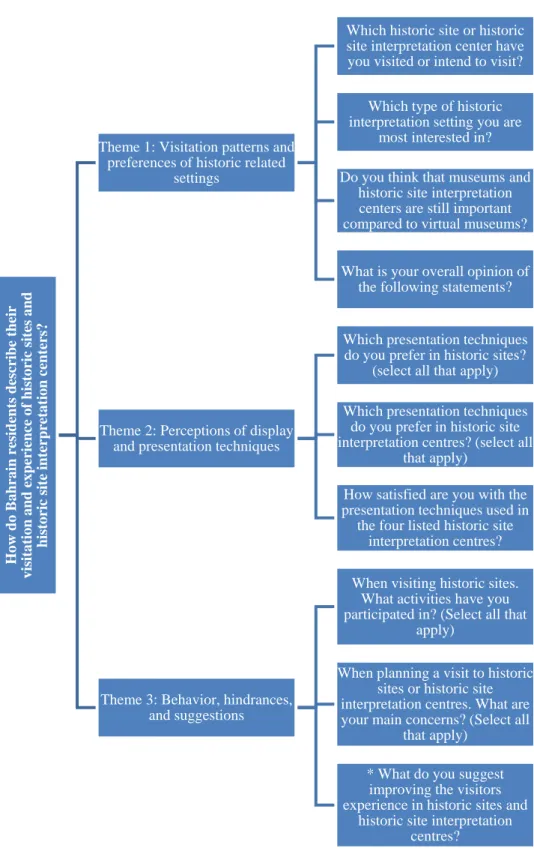
Contextual Setting: Bahrain
- Rationale and Justification of Selecting the Research
- Rationale and Justification of Selecting the Four Case
In other words, the site museum was built specifically to interpret the Qal'at Al Bahrein historical site. In addition, these offer the potential to represent different contextual configurations and relationships between the historic site and historic site interpretation centers, as presented next. Among the many Historic Sites Interpretation Centers in Bahrain, Qal'at Al Bahrein and site museum, Sheikh Salman Bin Ahmed Al Fateh Fort and Exhibition Center, Bu Maher Fort and Visitor Center, and Al Khamis Mosque and Visitor Center were selected as case studies for this research.
The Qal'at Al Bahrain City Museum and the Al Khamis Mosque Visitor Center are located near the historic city. The contextual setting provides an interchangeable walking route between the historic site and the city museum.
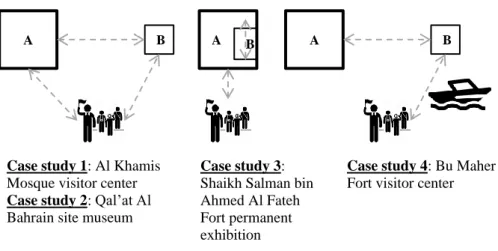
Methods of Sampling: Online Survey and Open-Ended
- Online Survey Participants
- Participants in the Semi-Structured Open-ended Interview
With the context described and justified, an understanding of sampling methods is required to consider the possible influences of participant classifications on the overall research findings. The nationality and role of the participants - service provider or visitor - were not taken into account, because they should not influence the results of the online survey since the main purpose of this instrument is to have a general overview of the participants. Participants in the service provider group were considered according to their role (decision maker, archaeologist, curator, visitor guide and receptionist) and their professional affiliation (Bahrain Authority for Culture and Antiquities, the four case studies under investigation and architectural firms). .
Of the 11 service providers who participated in the interview, 3 (14%) were the president of the Bahraini Authority for Culture and Antiquities, 1 archaeologist and 1 curator/archaeologist, 1 (5%) was an architect from an international agency, WOHLERT Arkitekter, and 7 (31%), including 3 visitor guides, 3 receptionists and 1 supervisor in the four case studies. Most of the participants preferred to conduct the interview anonymously and declined to be recorded, with the exception of the decision makers, archaeologists, curators and the.

Data Analysis Procedures
- Case Study Architectural Analysis: Site, Building and
- Quantitative Data Analysis: Tabulation and Graphical
- Qualitative Data Analysis: Thematic and Content Analysis
The second level aimed to evaluate the architecture of the building focusing on its overall appearance and spatial extent to assess its physical contribution to meaning. As a multi-level approach, architectural analysis sought to assess the contribution of physical features and applied display strategies in conveying meaning from the historic site to visitors. 11 (84.6%) of the survey questions were fixed-choice questions as shown in the survey questions (Appendix B).
Third, following the completion of the observation sessions at the four case study locations, the results and field notes were tabulated and re-graphed using Microsoft Excel software. Qualitative data analysis included a content analysis of the office account of the Bahrain Authority for Culture and Antiquities and photographs taken by the author, as well as a thematic analysis of the interview transcripts.
Summary
Finally, the final part of the interview findings was reported, using quotes and excerpts from the original interview as evidence to support the research argument and considering similarities/contrast ideas regarding the category of participants to gain a better understanding of the phenomenon under study.
Case Study and Visitors’ Descriptive Analysis
Preface
Architectural Analysis of Physical Features and Interpretive
- Al Khamis Mosque Visitor Center
- Qal’at Al Bahrain Site Museum
- Shaikh Salman bin Ahmed Al Fateh Fort Permanent
- Bu Maher Fort Visitor Center
98 Figure 4.1: Al Khamis Mosque location in relation to the country, the city and immediate surroundings. The historic site is located about 75 meters away, a short walk from the visitor center (Figure 4.2, the site plan). Shaikh Salman bin Ahmed Al Fateh Fort is in the north-south axis of the southern governorate of Bahrain, called Riffa area (Figure 4.24).
125 Figure 4.24: Shaikh Salman bin Ahmed Al Fateh Fort location in relation to the country, the city and immediate surroundings. It has several staircases connecting the rooms on different levels and to the fort roof (Figure 4.28, i). Shaikh Salman bin Ahmed Al Fateh Fort permanent exhibition is characterized by a free-standing glass pavilion located in the eastern courtyard of the archaeological fort (Figures 4.29 and 4.30).
142 Figure 4.37: Location of the Bu Maher Fort in relation to the country, the city and immediate surroundings.
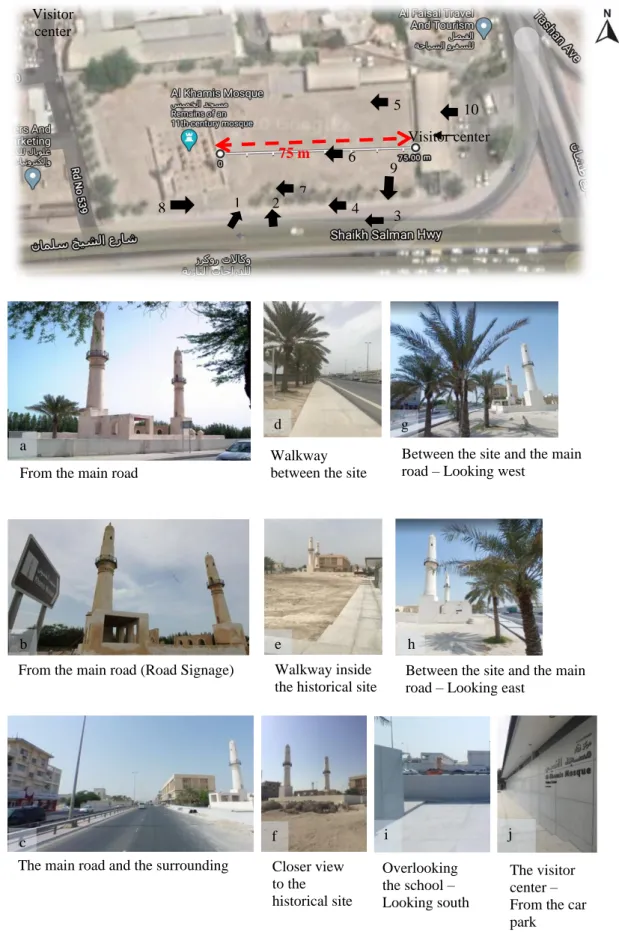
Descriptive Analysis of the Visitors’ Records and
- Visitation Records of Historic Site Interpretation Centers
- Elements that Form the Visitors’ Experiences, Concerns
- Shapes and Forms of Visitors’ Experiences at Historic Site
Historical Site (in Situ) Historical Museum (in Context) Historic Sites Interpretation Center (in Situ . and in Context). Surprisingly, only one-third (33.6%) of participants preferred to go to events and attend workshops offered by Historic Sites Interpretation Centers. In this regard, participants were asked “When planning a visit to historic sites or historic sites interpretation centers.
Most participants disagree on the act of demolishing the historic site and moving all artifacts to the adjacent Historic Site Interpretation Center (statement (c), Figure 4.56). I think the Historic Site Interpretation Center is perfect (i.e. easy to navigate and helpful for interpreting the historic site).
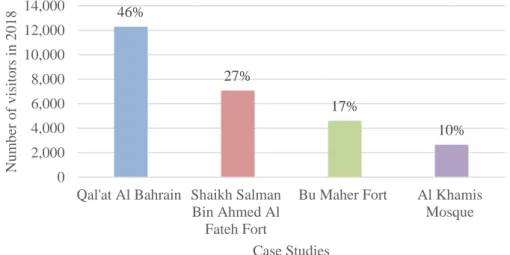
Summary
Thematic Analysis and Discussion
Preface
Data Collection Procedure of the Open-Ended Interviews
Data Analysis of Open-Ended Interviews
Open-Ended Interview: Results and Analysis
- The Role of Physical Context in Shaping the Visitors’
- The Dynamics of Visitors’ Experience and Meaning-
- The Aspects of Meaning-Making Process
- Suggestions and Recommendations: Towards a Better
Discussion
- Inquiry 1: How Does a Historic Site Interpretation Center
- Inquiry 2: Historic Site Interpretation Center: A Unique
Summary
Conclusion
Introduction
Limitations of the Research
Main Findings of the Study
- The Contextual Relationship and Modes of Accessibility
- The Mobility and Visual Connection within the Context: A
- The Historic Site Interpretation Center Architectural
- Visitors’ Interests, Cultural Backgrounds and Collective
- Decontextualization: Core Problem of Dual Modes of
Thesis Contribution
- A General Conceptualization of the Historic Site
- A Proposition of a New Museum Classification Based on
Indications for Further Research Works
- Broader Range of Case Studies
- The Visitors’ Experience during the Visit
- The Visitors’ Feedback after the Visit
- Historic Site Interpretation Centers, and the Meaning-
Closure Statement
